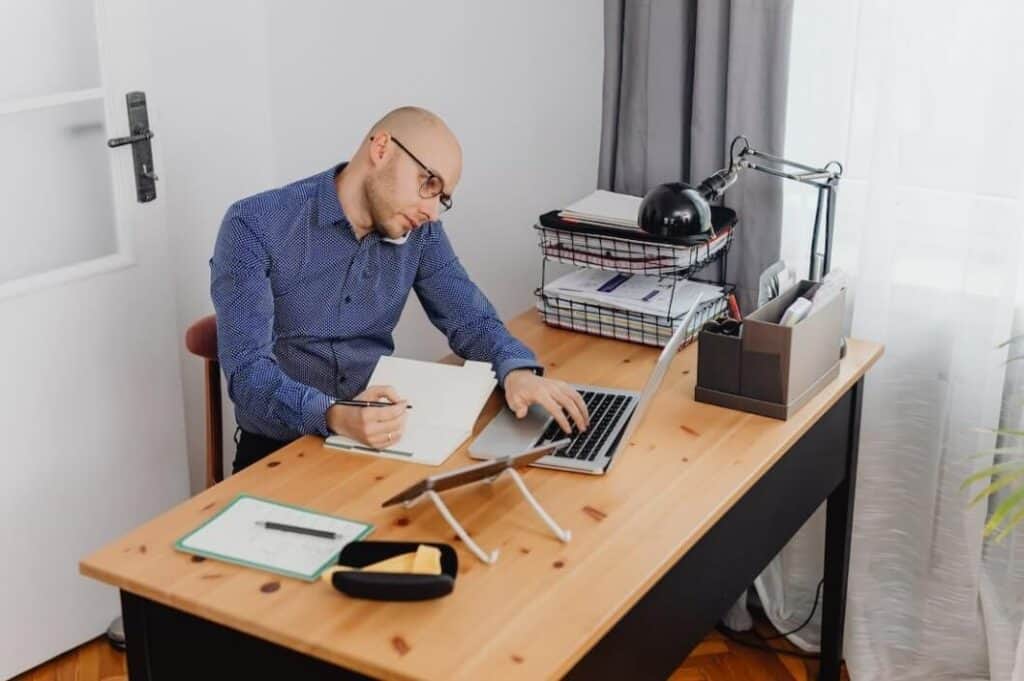Do you want to achieve better performance at work? If yes, then read on and find out how to improve focus by shifting to single-tasking instead of multitasking. From Multitasking to Single-tasking provides a mindful roadmap to improve work performance. Discover how focusing on one task at a time can revolutionize your workflow.
We live in a world that applauds those who can balance multiple tasks simultaneously. The ability to multitask is often seen as a prized trait, a testament to one’s productivity and efficiency. Yet, the truth paints a starkly different picture.

Our brains, contrary to popular belief, are not designed for multitasking. Instead, they excel in focusing on one task at a time, indicating that our admiration for multitasking may be misplaced.
Understanding Single-tasking: The Power of Focus
Single-tasking, the lesser-praised cousin of multitasking, is the practice of dedicating one’s undivided attention to a singular task. It’s a calculated approach, placing resources in one area for focused growth.
Adopting single-tasking can be challenging for many people, primarily because our fast-paced, digital world continually bombards us with information and demands our attention. The ubiquity of smartphones, multiple tabs on our browsers, and incessant notifications have conditioned us to split our attention.
Furthermore, societal and workplace expectations often glorify multitasking, creating the illusion that being busy equates to being productive.
In single-tasking, your cognitive resources are invested in one task at a time, resulting in optimal productivity. Neuroscience research supports this approach, highlighting that concentrated attention on a single task leads to enhanced task performance.
The Downside of Multitasking
We live in a world that applauds those who can balance multiple tasks simultaneously. The ability to multitask is often seen as a prized trait, a testament to one’s productivity, efficiency, and perceived intelligence skills. Yet, the truth paints a starkly different picture.
When we attempt to multitask, our brains are not truly doing tasks simultaneously. They are, in fact, rapidly switching attention from one task to another, a process that costs mental resources. This attention-switching leads to what psychologists call ‘attention residue,’ where your mind remains partially fixated on the previous task, thereby hampering your overall performance.
Further, multitasking can lower your IQ to the average level of an eight-year-old child. Moreover, multitasking can increase stress levels, as constantly switching between tasks keeps the brain in a state of heightened activity. It can lead to mental fatigue and potentially, burnout.
Beyond cognitive costs and stress, multitasking can have a detrimental impact on the quality of our work and our creativity. Our work may lack depth and thoroughness.
Additionally, the constant switching between tasks leaves little room for our minds to wander, a process that’s critical for creative insights and innovation. Therefore, while multitasking might seem like a productivity hack, it may, in fact, be stifling our potential for innovation and the production of high-quality work.
The Benefits of Single-tasking: A Deeper Look
On the flip side, single-tasking offers a host of benefits. First, it enhances focus and creativity. When you concentrate on a single task, you give your brain the space to think deeply, connect disparate ideas, and foster innovative solutions. This kind of deep work can lead to breakthroughs that multitasking simply doesn’t afford.
Second, single-tasking improves the quality of work. As you’re not consistently shifting your attention, you’re less likely to make careless mistakes. You have the mental bandwidth to check your work and ensure it meets high standards.
Finally, single-tasking promotes better mental health. By reducing the constant cognitive shifting and its accompanying stress, single-tasking allows for a calmer, more serene work environment.
Single-tasking has a plethora of applications, including in investing. Some people invest in stocks from multiple companies to diversify their portfolios. Such is good, but this can be a reason to lose focus. Hence, there are investors who concentrate on a single stock investment.
You might also like: How to Be Completely Anonymous on the Internet (13 Ways)
Tips for Transitioning from Multitasking to Single-tasking
It’s quite a leap to go from the chaotic world of multitasking to the focused realm of single-tasking. Here are some actionable steps to help you make that transition:
Identify Your Peak Productivity Hours
Our productivity levels fluctuate throughout the day. Some of us are morning people, others are night owls. Identifying when you’re most alert and productive can help you optimize your work schedule.
Use these ‘peak hours’ to tackle complex tasks that require deep concentration. It’s during these hours that your brain is most ready to fully invest in the task at hand.
Create a Distraction-Free Environment
To fully commit to single-tasking, it’s crucial to minimize potential distractions. You need an environment that promotes focus. Work on eliminating interruptions at work.
Start by turning off non-essential notifications on your digital devices. A constant barrage of emails, messages, and updates can shatter your focus and lure you back into multitasking.
Consider using productivity apps and browser extensions that block distracting websites, allowing you to fully concentrate on one task at a time
Establish Clear Boundaries
It’s essential to establish boundaries in your work life. Inform colleagues and family members of your focused work hours and request not to be disturbed during these periods.
If you’re working in a shared space, consider using headphones or a “do not disturb” sign to signal to others that you’re in deep work mode.
Practice Mindful Breaks
Taking regular breaks is vital to maintain mental freshness. However, these breaks can be a trap, luring you into multitasking. To avoid this, practice mindful breaks.
This could mean a short walk, a mindfulness meditation, or a few minutes of deep breathing exercises. Avoid checking your phone or emails during these breaks.
Prioritize Your Tasks
Single-tasking doesn’t mean you only do one thing a day. To do this effectively, you need to prioritize your tasks. Decide what tasks are most important and tackle them first.

You can use tools like the Eisenhower Matrix to help you categorize tasks based on their urgency and importance. Use a tool like Google Calendar to set reminders for priority tasks and allocate specific time slots to each.
Train Your Mind
This training can encompass a range of activities, from mindfulness exercises to technological aids such as focus-promoting apps.
For instance, some apps promote deep work by using the Pomodoro Technique, a time-management method where work is broken into intervals separated by short breaks.
Celebrate Small Wins
Finally, remember that transitioning from multitasking to single-tasking is a journey. Celebrate small victories along the way. Managed to focus on a single task for an hour? That’s a win.
Successfully resisted the urge to check emails while working on a report? Another win. Over time, these small wins will add up, helping you become a seasoned single-tasker.
Wrapping Up
Single-tasking holds the power to transform our productivity, work quality, and mental health. Embracing this mindful approach to work is a journey, one that requires commitment and practice. As we bid farewell to multitasking, we welcome an era of enriched focus and meaningful work.
You may also be interested in checking out:
- Why Use Managed IT Services and How to Get Good Ones
- How to Set Up a Magento Development Site?
- The Pros and Cons of Taking Financial Advice from TikTok
- Top 4 Types of Services Offered by MSP Companies